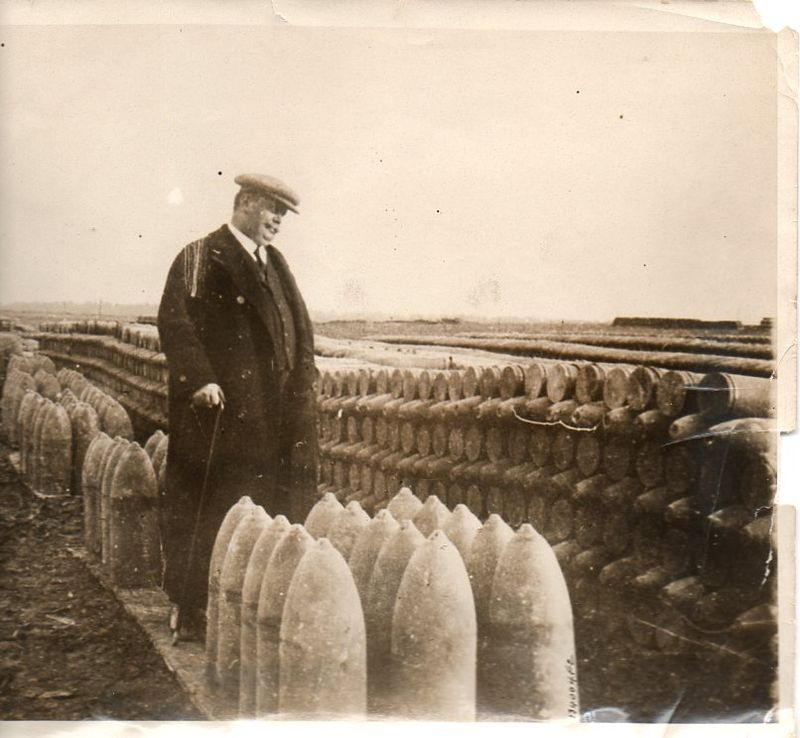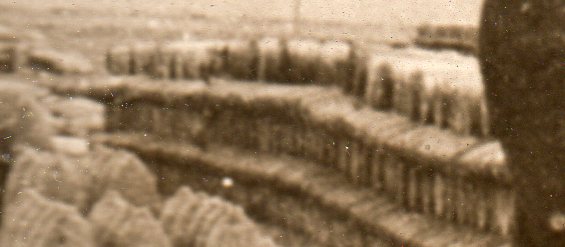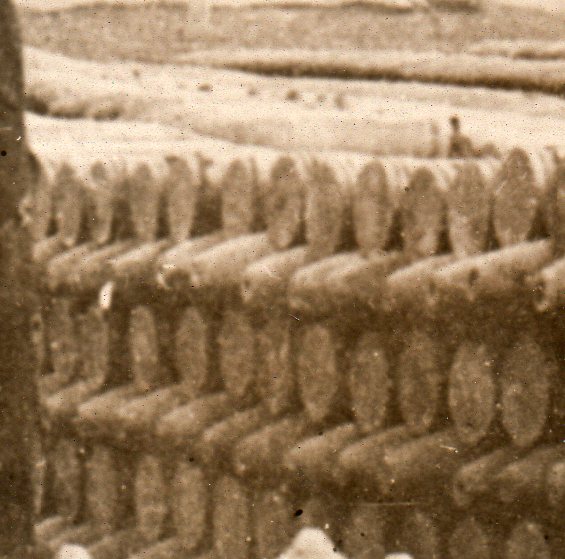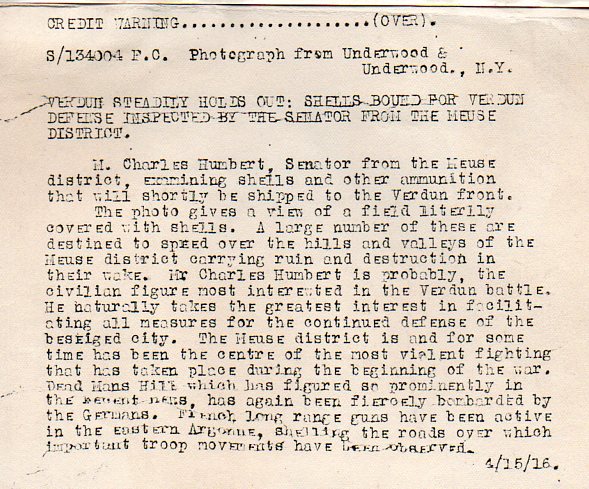JF Ptak Science Books Post 1388 (out of order!)
I just finished posting this from yesterday on a sea of shells and what those explosives meant in terms of overall destructive firepower for WWI. This explosives image is a little easier, in a way, just showing hints of the vastness of what might be an acre of large ammunition.
This photo (dated 15 April 1916 by the news photo service of Underwood and Underwood) shows a French senator--H. Charles Humbert--viewing "a field literally covered with shells", the photo really only giving some glimpse of the extent of the palleted shells, which fade into the distance behind M. Humbert and extend deeply into the field in front of him. (The original photo is available here at our blog bookstore.)
M. Humbert (1866-1927) would've had more of an interest in this scene than most, as he represented the Meuse district, and at this point int he war the shells were headed to a part of that area, Verdun. Verdun of course was one of the major battles of WWI, fought from 21 February to 18 December 1916, in the hills and dales of north-eastern France, at Verdun-sur-Meuse. There were 306,000 battlefield deaths at Verdun, plus another 500,000 wounded, in what may have been one of the most gruesome battles of modern times.
Humbert was also an Army veteran and wrote on the military, and as it turns out, as the war approached he adopted a call to arms for more canons and more shells for the defense of France the inadequacy of the defenses of the French Army, and the insufficiency of officers and munitions ("Des canons, des munitions!"). He certainly would've been relieved with what he saw here. Of course this is photo would represent a percentage well to the right of the decimal place of all those shells used at Verdun, which numbered an inconceivable 40 million. When this photo was made in April the battle was already wicked and had been fought for two months--there were still eight months of gore to go.







Comments